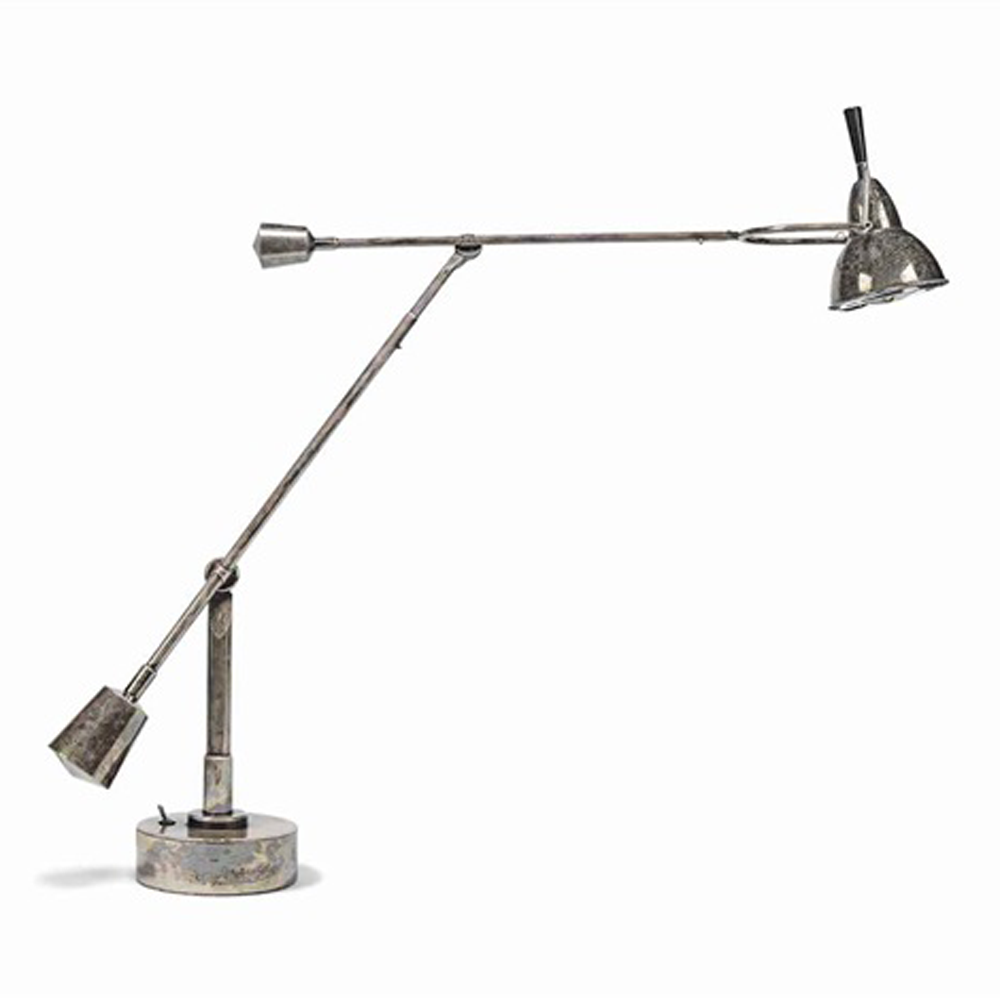
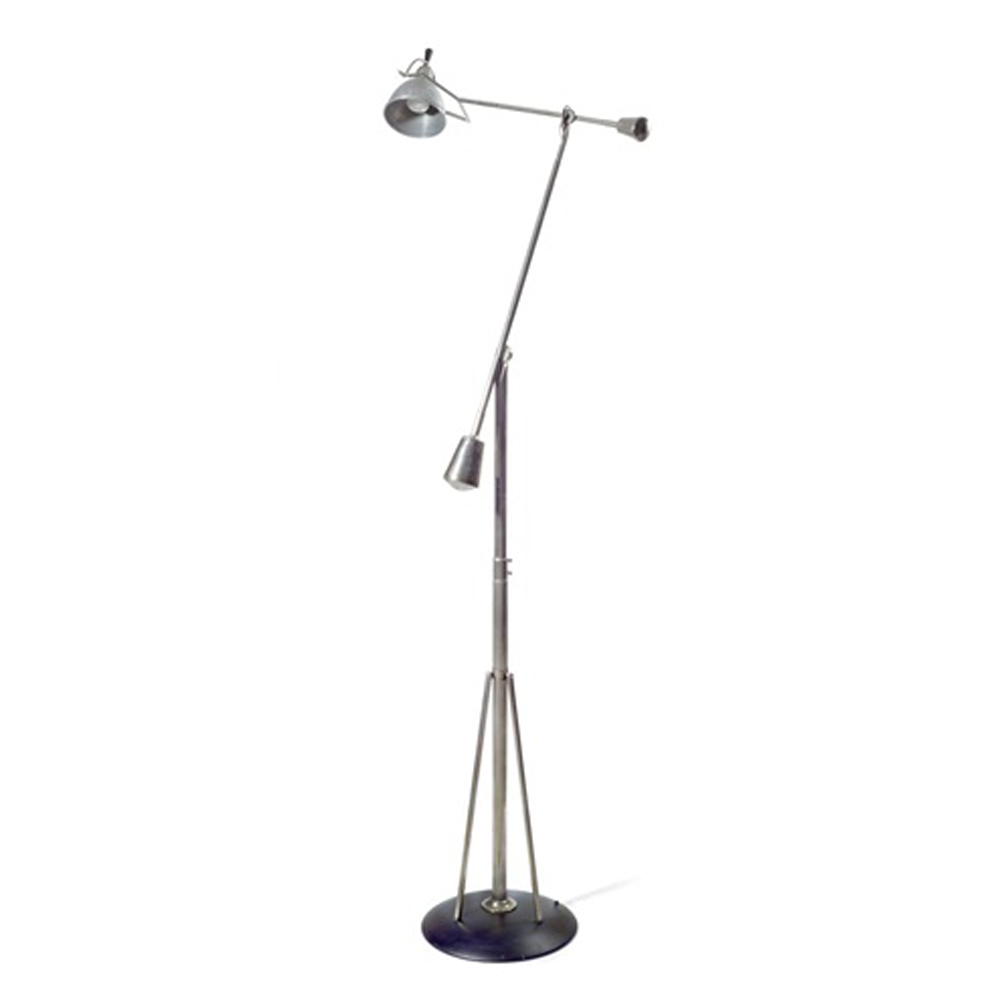
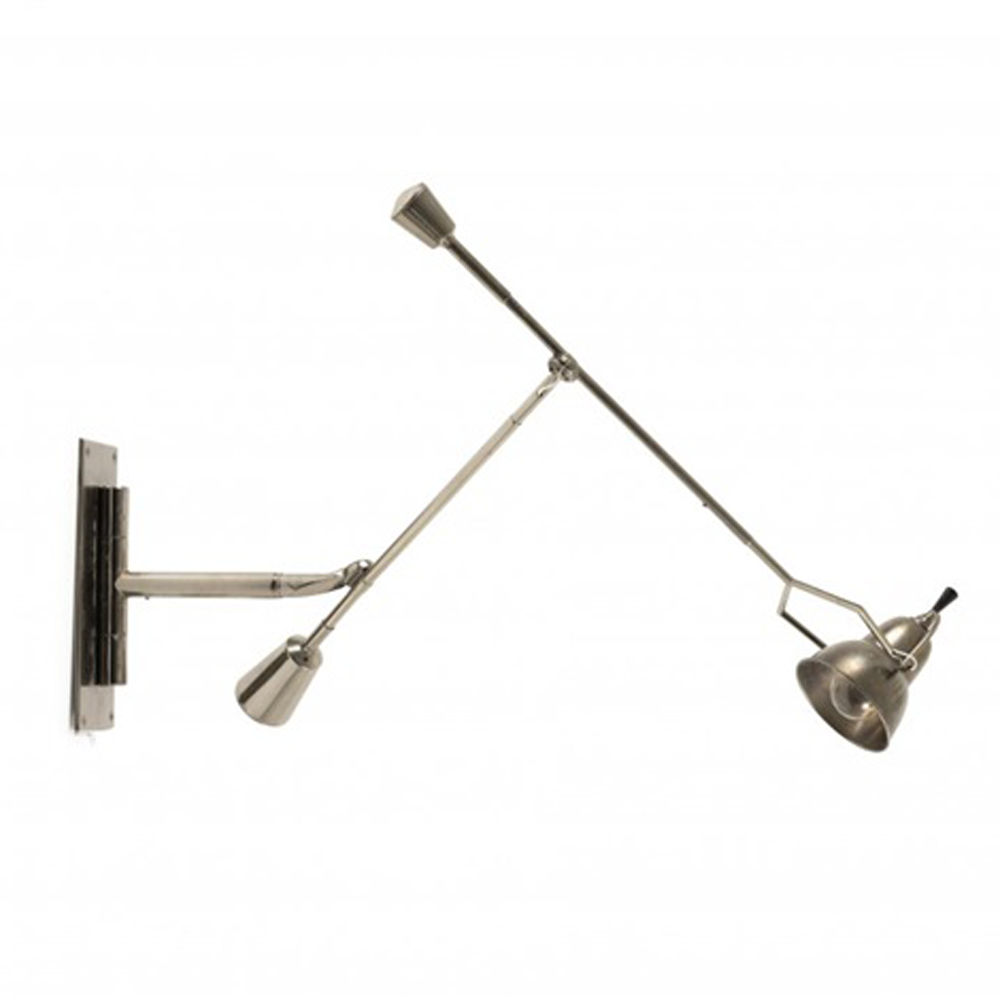
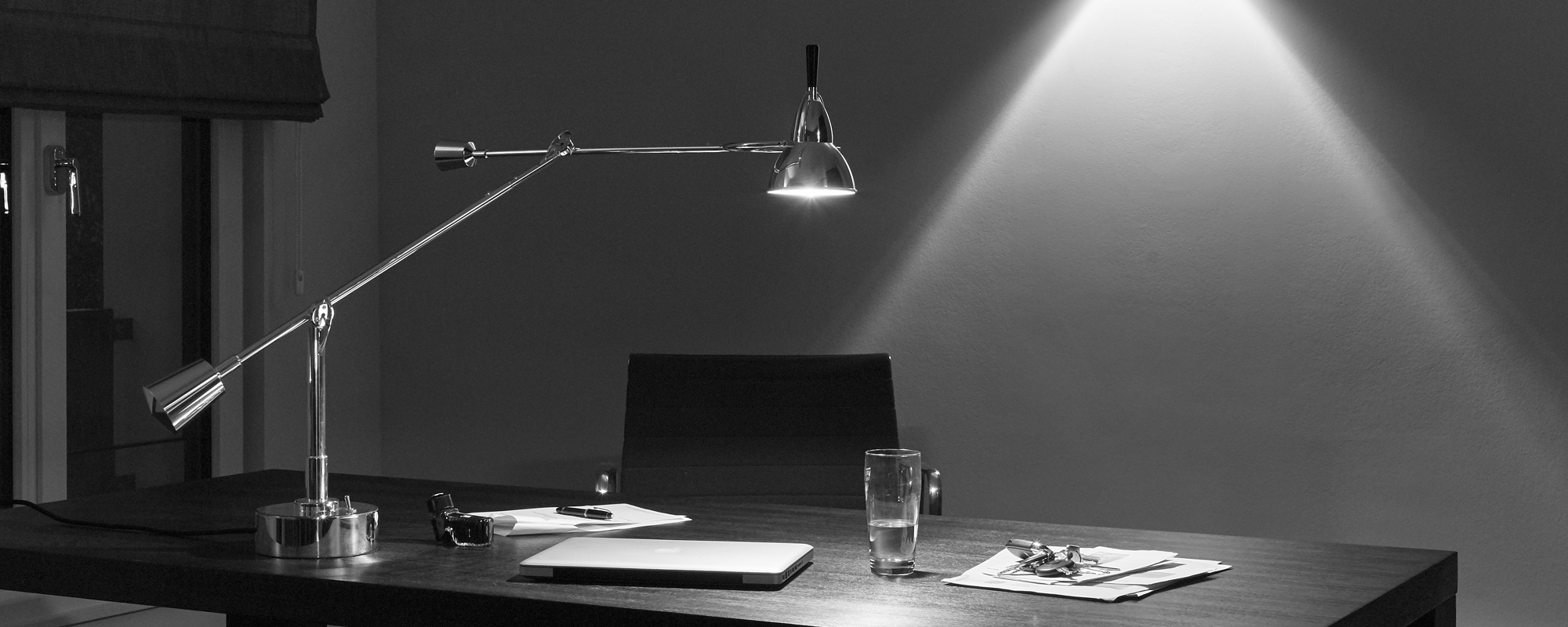
In February 1927, engineer Édouard-Wilfrid Buquet made a patent application for parts of his famous table lamp, including the exceptional joints.
Not much more is known about the man who came from the Paris suburb of Montrouge. He was and still is akin to a phantom in design history.
Balance is essential. In architecture, painting, movement, thinking, and in life. Politically as well as personally. Becoming unbalanced, losing balance, being thrown out of sync, losing focus, everything is set in motion when there is a lack of balance. At the start of the USth century, many things were set in motion. There were years of unrest, innovations, certainties that had lost balance. The yearning for order grew. Architects like Le Corbusier or Walter Gropius met the turbulence of the Golden Twenties with an objective and functional style; painters like Klee, Kandinsky or Mondrian met it with clear lines, organised planes, while Alexander Calder moved the line into the room, designing that which was in motion and seeking balance.
Engineer Édouard-Wilfrid Buquet interpreted the search for balance in his 1927 lamp as a shifting of weight. He objectively describes this poetic shifting of light in his patent specification as a “directional light fixture with jointed arm”. Practically, this design enables the lamp head to be moved in virtually any conceivable position through small shifts in the weight – sliding rather than pushing the centre of the light.



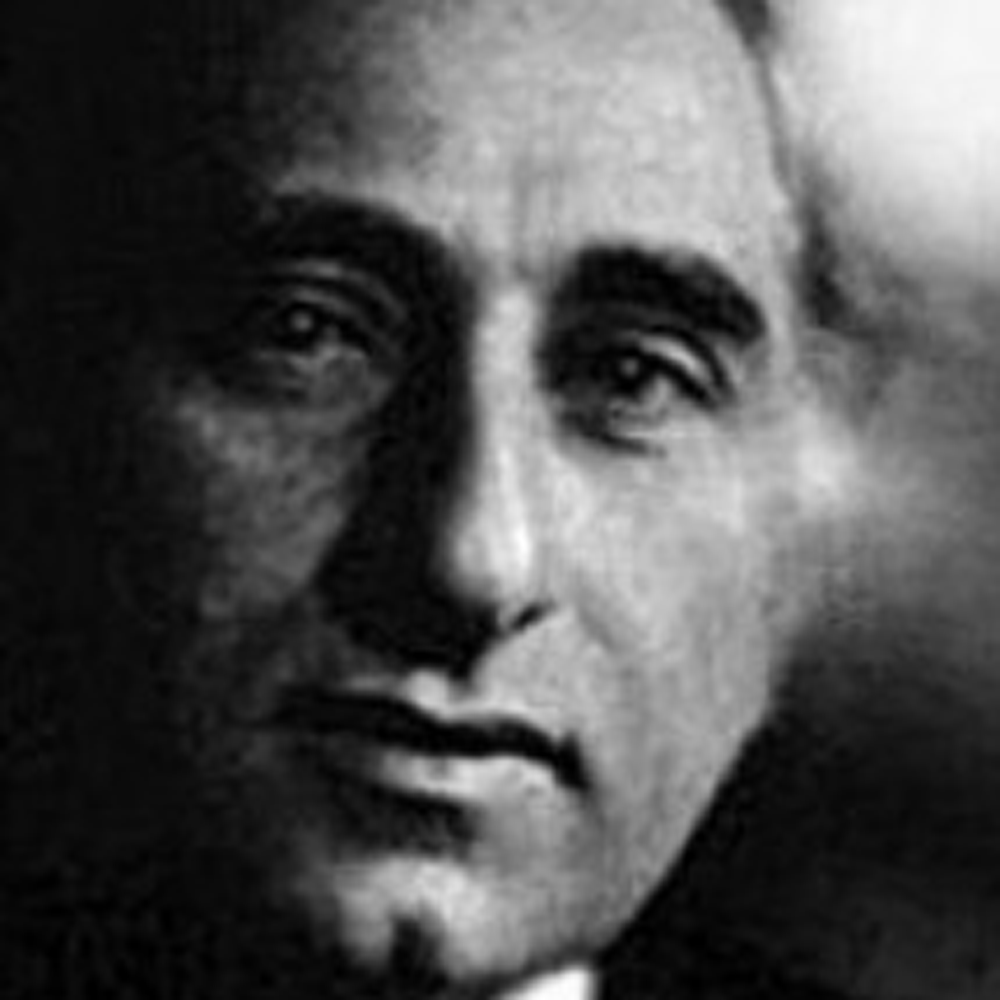
The fact that the EB 27 is more than just one of many ways to light up a desk, was not only recognized by the MoMA in New York, which presented a specimen of Buquet's “La Lampe Equilibrée” in the “Recent Acquisitions: Architecture and Design” exhibition in 1979, together with works by Marcel Breuer. Artists, painters and architects like Le Corbusier also appreciated the lamp and used it in ateliers as well as exhibitions.
In addition to the table lamp, Buquet also developed other models, designing a wall lamp as well as a floor lamp following the same principle. However, although the Bauhaus assigned lamp from the French designer was met with enthusiasm around the world, as well as being mentioned in many publications and being held in high regard, very little is known about Buquet and his work.
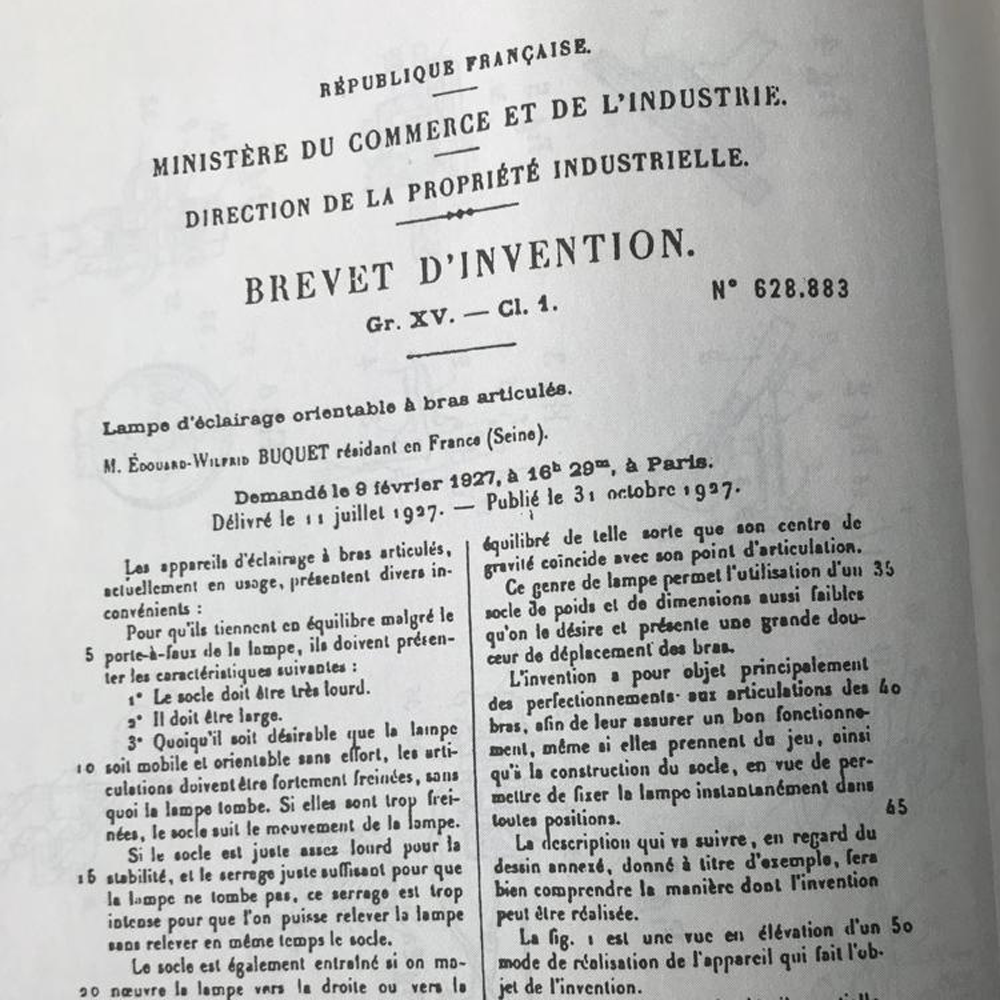
Perhaps it was due to the increasing material prices in the 1930s that the lamp disappeared from the books. Or because of the necessary meticulous handwork that was required to produce the individual parts, especially the joints, and to balance the weights. However, to this day, serial production is not possible due to the perfection required by the design. TECNOLUMEN still produces the EB 27 with precise, detailed craftsmanship. For this purpose the light has only been minimally adapted to current technical requirements.
The wooden base was replaced by metal, in order to give the transformer a secure spot, the narrow reflector outfitted with a contemporary frame. Everything else has remained the same as the patent specifications that Édouard-Wilfrid Buquet submitted to the Paris Ministry of Industry over ninety years ago. And so, “La Lampe Equilibrée” is a lamp that still combines fascinating, technical perfection and poetic ease to this day. Reduced to the essentials, with a timeless, clear vocabulary of shapes that still bring everything into balance.